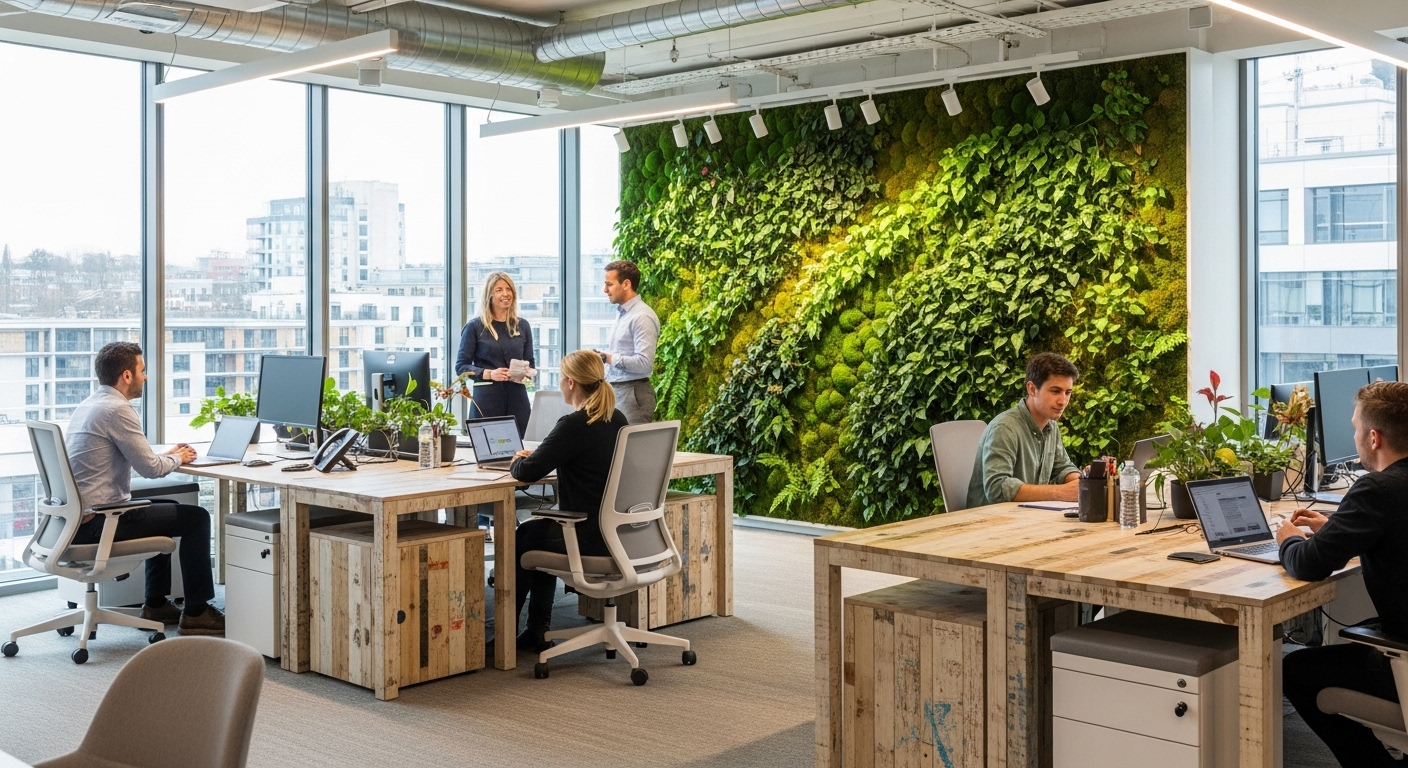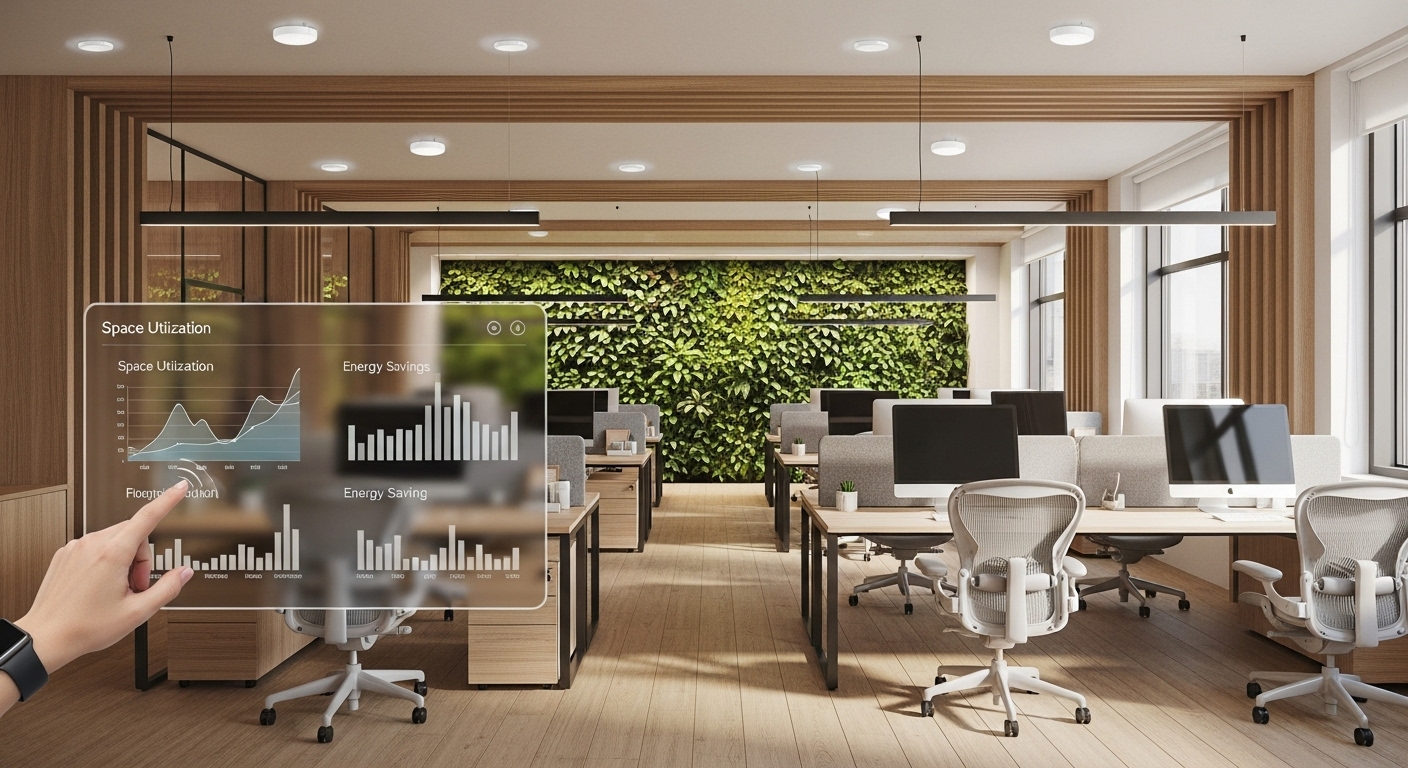In today’s rapidly evolving business landscape, ‘innovation’ has transcended its status as a corporate buzzword to become a fundamental imperative for survival and growth. The seismic shifts driven by artificial intelligence, widespread adoption of hybrid work models, and ever-increasing market volatility demand more than just incremental improvements. They require a systemic capacity for continuous adaptation and reinvention. Building a truly innovative workplace is no longer about hosting the occasional brainstorm session; it’s about architecting a resilient, self-sustaining ecosystem where creativity is nurtured, and great ideas are translated into tangible impact. This guide moves beyond the abstract to provide a strategic framework for embedding innovation into the very DNA of your organization. We will explore the critical pillars required to build a future-ready workplace, from establishing the psychological foundation of safety and curiosity to strategically leveraging technology, empowering employees, and implementing metrics that truly measure progress. This is your roadmap to transforming your organization from a passive reactor to a proactive architect of its own future.
The psychological foundation of innovation: cultivating safety and curiosity
Before any tool can be implemented or process redesigned, a culture of psychological safety must be established. This concept, popularized by Harvard professor Amy Edmondson, describes a shared belief that the team is safe for interpersonal risk-taking. In an environment lacking psychological safety, the fear of failure, judgment, or reprisal becomes the silent killer of innovation. Employees will hesitate to voice a nascent idea, question the status quo, or admit a mistake—all of which are essential actions for creative problem-solving. Fostering this foundation requires deliberate and consistent effort from leadership. It begins with leaders modeling vulnerability, openly admitting their own errors and uncertainties. This signals that perfection is not the standard; learning is. Organizations must also reframe their relationship with failure, celebrating ‘intelligent failures’—well-conceived experiments that didn’t yield the expected results but provided valuable lessons. By decoupling failure from incompetence, teams are free to explore uncharted territory. Furthermore, encouraging rampant curiosity is paramount. This can be achieved by creating forums for cross-departmental inquiry, rewarding thoughtful questions as much as concrete answers, and building a culture where saying ‘I don’t know, but let’s find out’ is seen as a strength, not a weakness. Without this bedrock of trust and curiosity, even the most brilliant minds will remain silent, and innovation will remain an aspiration rather than a reality.
Beyond gadgets: leveraging technology as an innovation catalyst
Technology is a powerful amplifier of innovation, but it is not a solution in itself. The common pitfall is ‘tech-first’ thinking, where organizations adopt the latest gadgets or software suites expecting them to magically generate new ideas. A more strategic approach views technology as a catalyst that augments human creativity and collaboration. For instance, generative AI should be positioned not just as a tool for automating tasks, but as a collaborative partner for brainstorming, data synthesis, and identifying patterns that humans might miss. It can accelerate the research phase, allowing teams to spend more time on higher-order strategic thinking. Similarly, digital collaboration platforms like Miro, Slack, or Asana are most effective when they are intentionally used to break down organizational silos. They should be configured to create transparent, asynchronous channels for communication that allow ideas to flow freely across teams and time zones, fostering serendipitous connections that spark new insights. The key to successful technology integration is a human-centric approach. Before deployment, leaders must ask: Does this tool reduce friction? Does it empower our people with better information? Does it facilitate deeper collaboration? By focusing on empowering people rather than just implementing platforms, technology shifts from being a costly distraction to a true engine of innovation, enabling teams to work smarter, faster, and more cohesively.
Redesigning the workflow: embedding agility into daily operations
Innovation cannot be a siloed activity, relegated to an ‘R&D department’ or an annual offsite. To be sustainable, it must be woven into the fabric of daily work. This requires a fundamental redesign of traditional, linear workflows, replacing them with more agile and iterative processes. Agile methodologies, born in software development but now widely applicable across all business functions, offer a powerful framework for this transformation. The core principle is to break down large, complex projects into small, manageable experiments known as sprints. Each sprint has a clear goal and concludes with a review, allowing the team to learn, adapt, and pivot quickly based on real feedback. This iterative approach de-risks innovation by preventing teams from investing significant time and resources into an unproven idea. It creates a continuous cycle of building, measuring, and learning, making innovation a routine practice rather than a monumental event. Embedding agility also means fostering robust feedback loops throughout the organization. This involves creating simple, accessible channels for employees, customers, and partners to provide input, and more importantly, ensuring that this feedback is systematically reviewed and acted upon. When people see their insights leading to tangible changes, they become more engaged and proactive, creating a self-reinforcing cycle of continuous improvement that drives the entire organization forward.
The grassroots revolution: empowering employee-led innovation
The most transformative ideas often originate from the front lines—from employees who interact with customers daily, grapple with inefficient processes, and possess an intimate understanding of the organization’s real-world challenges and opportunities. A top-down approach to innovation, where strategy is dictated solely by senior leadership, inevitably misses these invaluable grassroots insights. Empowering employee-led innovation means decentralizing the creative process and trusting your team. A powerful method for this is creating structured programs that provide employees with the resources, time, and autonomy to explore their own ideas. This can take the form of internal ‘hackathons,’ where cross-functional teams collaborate intensively to solve a specific problem over a short period. Another approach is to formalize ‘innovation time,’ allowing employees to dedicate a portion of their workweek to passion projects or exploratory research, a practice famously pioneered by companies like Google. However, empowerment is about more than just sanctioned time; it requires clear and transparent channels for ideas to be submitted, evaluated, and potentially funded. Establishing an ‘idea pipeline’ where employees can track the progress of their suggestions builds trust and encourages participation. Finally, identifying and nurturing ‘innovation champions’—passionate individuals within teams who can mentor others and advocate for new approaches—can help sustain momentum and embed an innovative mindset at every level of the organization.
Designing for discovery: the role of physical and digital space
The environment in which we work profoundly influences our ability to think creatively and collaborate effectively. Whether physical or digital, workspace design should be an intentional act aimed at fostering discovery and connection. In the era of hybrid work, this requires a dual focus. The physical office is no longer just a place to complete tasks; it must become a destination for the kind of high-bandwidth collaboration that is difficult to replicate remotely. This means moving away from monotonous seas of cubicles and designing multi-functional ‘zones’ tailored to different activities. This includes quiet, library-like areas for deep focus; dynamic, open spaces with whiteboards and flexible furniture for group brainstorming; and comfortable, cafe-style lounges that encourage informal social interaction and serendipitous conversations—often the very crucibles of innovation. On the digital front, the same intentionality is needed. A well-designed digital workspace goes beyond a collection of apps. It involves creating virtual ‘water coolers’—dedicated channels or spaces for non-work-related chat to build social bonds. It means establishing a centralized, easily searchable knowledge base that prevents information silos and ensures everyone has access to the organization’s collective intelligence. The goal is to design a cohesive ecosystem where both planned collaboration and spontaneous discovery can thrive, regardless of where an employee is located.
Measuring what matters: metrics for a thriving innovation culture
One of the greatest challenges in fostering innovation is demonstrating its value, as its outcomes are often long-term and difficult to quantify with traditional financial metrics like quarterly ROI. Over-reliance on short-term financial measures can prematurely kill promising ideas before they have a chance to mature. Therefore, building a thriving innovation culture requires a more nuanced and forward-looking approach to measurement. Instead of focusing solely on lagging indicators (like revenue from new products), organizations should track leading indicators that measure the health of their innovation pipeline and culture. These metrics might include the number of new ideas submitted by employees, the percentage of the workforce participating in innovation programs, or the number of cross-functional experiments initiated per quarter. Another powerful metric is the ‘idea-to-launch’ cycle time, which measures the organization’s agility in turning a concept into a market-ready prototype. Furthermore, qualitative data, such as employee survey results on psychological safety or their perceived ability to challenge the status quo, can provide invaluable insight into the cultural soil. By shifting the focus to these process- and culture-oriented metrics, leaders can gain a much clearer picture of their organization’s innovative capacity and make more informed decisions to nurture its long-term growth, confident that strong leading indicators will eventually translate into powerful bottom-line results.
In conclusion, the innovation imperative is a call to fundamentally re-architect the way we work. It is not a single initiative or a technological fix, but a holistic and sustained commitment to building an organization that is inherently curious, resilient, and adaptive. The journey begins with the human element, creating a foundation of psychological safety where every individual feels empowered to contribute. It is amplified by the strategic use of technology as a tool to augment human intellect and collaboration, not replace it. This cultural and technological framework is then operationalized through agile processes that embed experimentation and learning into daily routines, fueled by the grassroots energy of employee-led initiatives. All of this is supported by intentionally designed physical and digital spaces that encourage connection and discovery, and measured by a sophisticated set of metrics that track cultural health and innovative velocity. Organizations that embrace this multi-faceted approach will not only survive the disruptions of the future but will actively shape them, creating a sustainable competitive advantage built on a culture of continuous, meaningful innovation.





